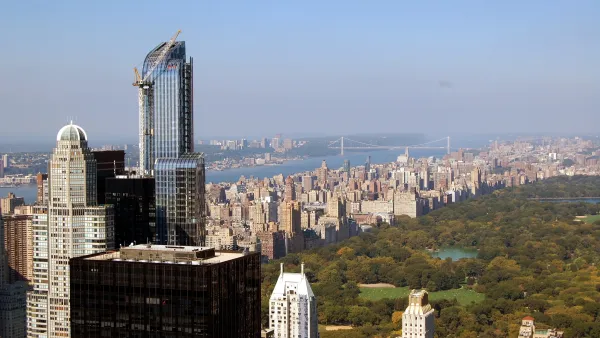Last week, voters in San Francisco voted against a measure to compel the city to set aside $30 million for affordable housing. Opponents of the proposal argued that "the city already has spent more than $200 million on affordable housing in the past several years, and is building more units - some affordable, some not - than anytime in recent history." (1) San Francisco is not alone; government at all levels seeks to provide housing assistance for the poor. But at the same time, government zones and rezones property to protect "property values" (2) - in other words, to cause home prices to increase over time rather than decrease. So government makes housing expensive with one arm while trying to provide affordable housing with the other.
Last week, voters in San Francisco voted against a measure to compel the city to set aside $30 million for affordable housing. Opponents of the proposal argued that "the city already has spent more than $200 million on affordable housing in the past several years, and is building more units - some affordable, some not - than anytime in recent history." (1) San Francisco is not alone; government at all levels seeks to provide housing assistance for the poor.
But at the same time, government zones and rezones property to protect "property values" (2) - in other words, to cause home prices to increase over time rather than decrease. So government makes housing expensive with one arm while trying to provide affordable housing with the other.
But how can housing be affordable and at the same time become consistently more expensive? Either a house costs low price X or it costs high price Y: it cannot cost both X and Y at the same time.
The only way to accommodate the public need for affordable housing and sellers' lust for expensive housing is to subsidize buyers (and renters). San Francisco is doing this through tax revenue. But this strategy has its limits. Is there ever going to be enough tax revenue available to bridge the gap between San Francisco's expensive housing and the average resident's paycheck? And if San Franciscans tax themselves heavily in order to bridge this gap, will they be able to afford even so-called "affordable" housing?
At the national level, the Federal Reserve sought to subsidize buyers less directly, by lowering interest rates, thus encouraging banks to lend more money and buyers to take on additional levels of debt. But this strategy does not seem to have worked particularly well, and the banks now demand additional subsidies.
Americans seem to want three incompatible benefits: (1) expensive housing, (2) that they can afford to buy, without (3) massive government subsidies. Any two of these are easy to achieve. But I see no easy way to get all three.
1.www.sfgate.com/cgi-bin/article.cgi?f=/c/a/2008/11/05/BA1B13S0US.DTL&hw=…
2. Durkin Village Plainville v. Zoning Board, 946 P.2d 916, 921 (Conn. App. 2008) (protecting property values a major purpose of zoning).

Analysis: Cybertruck Fatality Rate Far Exceeds That of Ford Pinto
The Tesla Cybertruck was recalled seven times last year.

National Parks Layoffs Will Cause Communities to Lose Billions
Thousands of essential park workers were laid off this week, just before the busy spring break season.

Retro-silient?: America’s First “Eco-burb,” The Woodlands Turns 50
A master-planned community north of Houston offers lessons on green infrastructure and resilient design, but falls short of its founder’s lofty affordability and walkability goals.

Test News Post 1
This is a summary

Analysis: Cybertruck Fatality Rate Far Exceeds That of Ford Pinto
The Tesla Cybertruck was recalled seven times last year.

Test News Headline 46
Test for the image on the front page.
Urban Design for Planners 1: Software Tools
This six-course series explores essential urban design concepts using open source software and equips planners with the tools they need to participate fully in the urban design process.
Planning for Universal Design
Learn the tools for implementing Universal Design in planning regulations.
EMC Planning Group, Inc.
Planetizen
Planetizen
Mpact (formerly Rail~Volution)
Great Falls Development Authority, Inc.
HUDs Office of Policy Development and Research
NYU Wagner Graduate School of Public Service




























